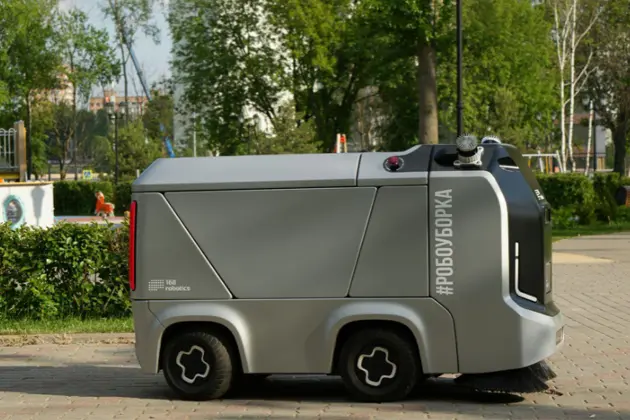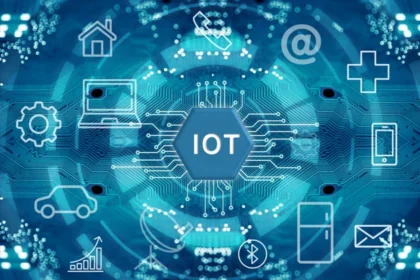It is to envision cars that make precise turns down city streets, weave through pedestrians, and avoid numerous obstacles safely, driver included. With the help of computers, the backbone of self-driving technology, this world has slowly materialised. Computer vision processes information from cameras and sensors, thus allowing cars to “see” the outdoors while simultaneously making decisions based on navigation and safety in real-time. This technology is changing the face of transportation and our understanding of machine decision-making. With each passing day, companies are in a race to perfect these systems, improvements that are accelerating to push the boundary of what is possible.
Understanding Computer Vision: How Machines Interpret Visual Data
Computer vision is a machine’s capability to interpret and understand the visual data around it. In the case of self-driving cars, the capability consists of a complex integration of hardware and software. Cameras mounted on the car take continuous pictures of the environment. These images then pass through complicated algorithms, which perform image recognition and object detection tasks. Car software classifies the things that come into its view, such as pedestrians, other vehicles, road signs, and hazards, by making real-time decisions based on them. If you want to dig deeper into what computer vision contributes in this respect and how it’s driving all these innovations, refer to https://data-science-ua.com/computer-vision/.
The Technology Behind Computer Vision: Algorithms at Work
Computer vision draws its power from the algorithms applied to analyse visual data. The most prominent among them is CNNs, specifically designed to catch patterns in images and accurately identify various objects. Thus, image classification aims to identify specific objects, such as cars, bicycles, or people. Object detection goes one step further and points to the exact location of such objects in an image. It is real-time because the self-driving cars would analyse the environment, calculate the safe paths, identify the obstacles, and set their speeds and directions accordingly. This smooth processing of real-time data and accurate interpretation of visual input will keep autonomous driving a reality.
Challenges Faced by Self-Driving Cars: What Makes the Road So Complex?
However, despite such fantastic capabilities, the self-driving car faces some unique challenges on the road. Poorer light conditions, unexpected road elements, and changing weather complicate the ability of the vehicle to interpret its surroundings correctly. Factors like thick fog or heavy rain obscure visibility and make algorithms’ jobs spotting lane markings or pedestrians rather difficult. Of equal importance, self-driving cars have to learn their way through unpredictable human behaviours, such as jaywalking or sudden lane changes. These factors show the dire need for improvement in hardware and software to guarantee safety and reliability on the road.
Training the AI: How Do Self-Driving Cars Learn to See?
The AI in autonomous vehicles has to be trained with large amounts of big data. Developers use millions of images and videos taken from real-world scenarios to train algorithms about object identification and decision-making. This is a type of supervised learning where the data are labelled such that a machine learning model would know to pick up elements, for instance, pedestrians or traffic lights. By exposing the AI to a wide array of scenarios, developers get it ready for what it would see on the road. The more data the algorithm processes, the better it makes predictions during real-time driving situations.
The Future of Self-Driving Cars: Can Algorithms Drive Better Than Humans?
The big question is whether algorithms, one day, will outcompete the human driver. The recent progress in deep learning, AI, and sensor technology has given a fillip to the prospects of self-driving cars. There are, however, some residual ethical dilemmas, including decision-making in life-and-death situations. Suppose an autonomous vehicle goes into an accident that could not have been avoided; should it decide for the passengers and at the cost of pedestrians? These are major moral issues, making the already uphill task of creating fully autonomous vehicles more difficult. However, further improvement in AI means that in a few years, self-driving cars might bring down accidents and traffic congestion by a considerable margin.
Conclusion: The Road Ahead for Computer Vision and Autonomous Vehicles
Finally, computer vision is the future of changing face transportation. Allowing cars to “see” and understand what is happening around them, this technology can unlock the door to autonomous driving. Admittedly, there are a lot of obstacles to overcome, such as unequal road conditions and ethical considerations; however, the efforts put into AI and deep learning continue to progress further than one could ever imagine. As algorithms continue to evolve, we get closer and closer to the time when self-driving cars will be part of everyday life without any threat concerning safety issues. The journey is still being completed, but the road ahead does look promising.










